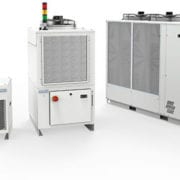The 6 Step Guide to Choosing the Best Chiller for your Application
Heat is a single common by-product of today‘s manufacturing machines that include the advanced automation technology required for both high speed operation and high precision. Components such as spindle motors, variable frequency drives, laser and x-ray sources all require cooling to operate properly and reliably – most often in the very adverse manufacturing environments.

With manufacturing space at a premium, machine packages have become smaller and liquid cooling has emerged as the most efficient and economical means of removing process heat. Liquid cooling is especially well adapted to hot, dirty environments, where it provides a method of removing the heat from the machine and not contributing additional heat back into the environment.
A quick guide to choosing the correct chiller:
As each industrial environment is different, Pfannenberg designed a 6-steps guide to help you select the proper chiller for your application:
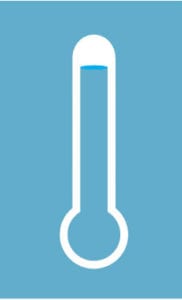 Step 1: Determine the Heat Load
Step 1: Determine the Heat Load
It is important to determine the heat load of your application to ensure the chosen chiller is big enough for the intended application.There are several ways to determine the heat load (in BTU) but understanding the process is essential to calculating an accurate heat load.
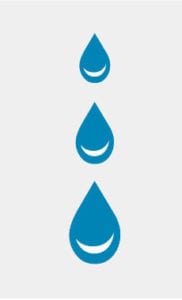 Step 2: Determine the Coolant Type, Temperature & Flow Rate
Step 2: Determine the Coolant Type, Temperature & Flow Rate
When the heat load is known, the next step is to determine the coolant, its target temperature and the flow rate that the chiller must provide to the process. This is determined by the method from which the heat is transferred from the process to the coolant and the type of coolant being used. For example, water has different characteristics than oil.
 Step 3: Identify Installation Environment
Step 3: Identify Installation Environment
In what environment the chiller will be installed? Indoor applications for example can see high temperatures and dirty atmospheres, while outdoor installations can experience both low and high ambient temperatures. This can effect chiller sizing and require accessories such as air filters, sump heaters, etc.
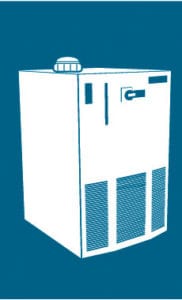 Step 4: Use Chiller performance curves
Step 4: Use Chiller performance curves
Now use the chiller performance curves available to select a chiller model that meets or exceeds the required capacity based on the chilled water supply temperature and the highest expected ambient air temperature. Consideration should be given to the safety margin of the application with respect to available frame sizes to maximize the value of the chiller selection. Find all Pfannenberg Chillers Performance Curves on Thermal Management Catalog.
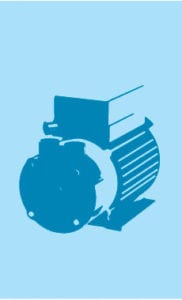 Step 5: Check Pump performance curves
Step 5: Check Pump performance curves
Check the pump performance curves available to ensure that the pump will provide enough pressure at the design flow rate to satisfy the application. Some liquid cooled systems have small coolant flow paths or longer distances that can have higher than average pressure losses.
 Step 6: Final Selection
Step 6: Final Selection
Finally, consider that the remaining application requirements such as power characteristics, control options, footprint, agency listing, color, etc. are met by the selected standard Pfannenberg chiller. Choosing a standard chiller will bring you greater reliability, easier service with common spare parts and global support.
>> Click here to download the PDF version of this guide.
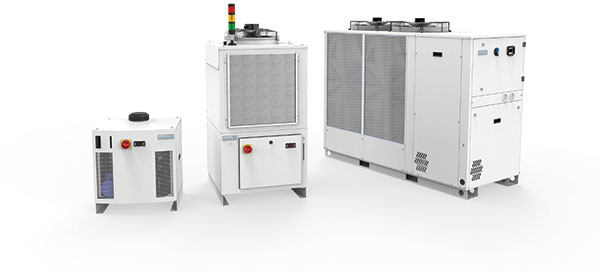 Pfannenberg offers a versatile range of packaged chillers, ranging in sizes from less than ½ Ton to 30 Tons insuring the proper capacity available for most applications. These packaged chillers are ready to use requiring only piping and power to install as part of your solution for process cooling applications – we‘ll even provide the coolant. Ethylene & Propylene Glycol coolants, with proper corrosion inhibitors are available in a variety of packaging options – both full strength and pre-mixed. Each chiller model includes the pump, tank, refrigeration system and controls required for simple installation and reliable, efficient operation.
Pfannenberg offers a versatile range of packaged chillers, ranging in sizes from less than ½ Ton to 30 Tons insuring the proper capacity available for most applications. These packaged chillers are ready to use requiring only piping and power to install as part of your solution for process cooling applications – we‘ll even provide the coolant. Ethylene & Propylene Glycol coolants, with proper corrosion inhibitors are available in a variety of packaging options – both full strength and pre-mixed. Each chiller model includes the pump, tank, refrigeration system and controls required for simple installation and reliable, efficient operation.
Our knowledgeable applications staff is always on hand to discuss the application and to make sure that a proper selection is made. With our many available equipment options we can easily customize our standard chillers to meet specific application requirements.
Contact our engineering team for more information!

